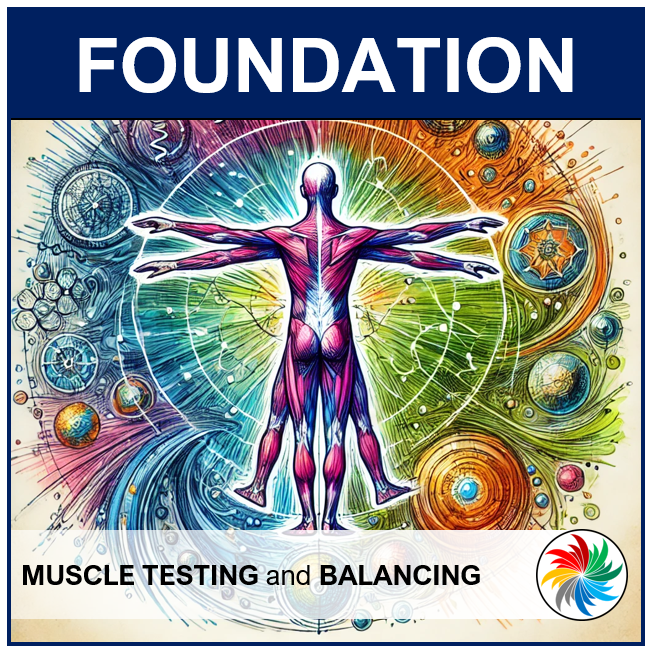
Level 2 delves more deeply into balancing our system’s energetic relationships, using the ancient Chinese Law of the 5 Elements. At the end of Level 2 you will be able to:
- Balance a further 14 muscles using extra balancing methods.
- Use circuit location to find the priority balancing method.
- Further, use the principles of Traditional Chinese Medicine for energy balancing including the Law of 5 Elements.
- Enhance future performance using E.S.R.
- Use muscle monitoring to identify sensitive foods and substances.
- Use additional simple pain techniques.
- Use specific integrating movements to improve coordination.
Level 2 builds upon the foundational concepts introduced in Level 1. It introduces advanced techniques. It also expands on the principles of energy balancing. This course focuses on the Law of Five Elements. It enhances the ability to address deeper energy imbalances. It introduces new muscles, reflexes, and advanced balancing techniques.
Core Concepts:
Law of Five Elements: This is a framework derived from Traditional Chinese Medicine. It represents natural cycles and relationships between elements (Wood, Fire, Earth, Metal, and Water). Two energy cycles: Shen (Generating) Cycle: Mother-daughter relationships promoting growth and support. Ko (Control) Cycle: Grandmother-grandchild relationships provide regulation and balance.
Balancing Techniques: Advanced circuit locating to identify imbalances and determine optimal correction methods. Application of the Law of Five Elements to balance over- and under-energy patterns. Integration of Yin-Yang principles and meridian time cycles.
Proprioceptive Techniques: Spindle Cell Mechanism: Used to either strengthen or relax muscles through sensory receptors located in the muscle belly. Golgi Tendon Apparatus: Located near muscle origins and insertions, employed to adjust tension and prevent damage.
Meridian Wheel Balancing: Analyzing energy flow using tools such as the Beaver Dam, Triangles and Squares, and the Midday/Midnight Law to restore harmony across the meridians.
14 Additional Muscles Introduced:
In addition to the 14 muscles from Level 1, Level 2 covers 14 new muscles, including their associated meridians, functions, reflex points, and nutritional links:
- Stomach: Anterior Neck Flexors, Brachioradialis
- Spleen: Middle Trapezius, Lower Trapezius
- Small Intestine: Abdominals
- Bladder: Sacrospinalis
- Kidney: Iliacus
- Circulation/Sex: Adductors, Piriformis
- Triple Warmer: Sartorius
- Gall Bladder: Popliteus
- Liver: Rhomboids
- Lung: Deltoids
- Large Intestine: Quadratus Lumborum
Key Techniques and Applications:
Acupressure Holding Points: Stimulating specific points for pain relief and energy balancing. Includes tonification to enhance energy flow.
Meridian Walking: Effective for alleviating recent pain by tracing the flow of energy along a meridian.
Food Testing: Assessing the body’s response to foods or substances using muscle testing to determine if they are biogenic (beneficial), biostatic (neutral), or biocidic (harmful).
Emotional Stress Release (ESR): Extends the application of ESR to future performance, enabling individuals to mentally rehearse and reduce stress related to upcoming events.
Simple Pain Techniques: Techniques like Spindle Cell manipulation to address cramps and spasms effectively.
Cerebro-Spinal Technique: A specialized technique to address abdominal muscle imbalances and improve posture by enhancing the flow of cerebrospinal fluid.
Practical Applications:
Advanced Energy Balancing: Using Alarm Points to detect over- and under-energy in meridians and applying the Law of Five Elements for precise corrections. One-point correction methods to address multiple imbalances efficiently.
Postural Improvements: Strengthening new muscle groups to support alignment and reduce strain on the body.
Goal Setting: Incorporating goals into the balancing process to ensure alignment with the individual’s intentions.
Training and Assessment:
Level 2 is a 15-hour course that includes theoretical learning, practical application, and proficiency assessment. Students gain a deeper understanding of energy systems and their relationship to physical, emotional, and nutritional well-being.
